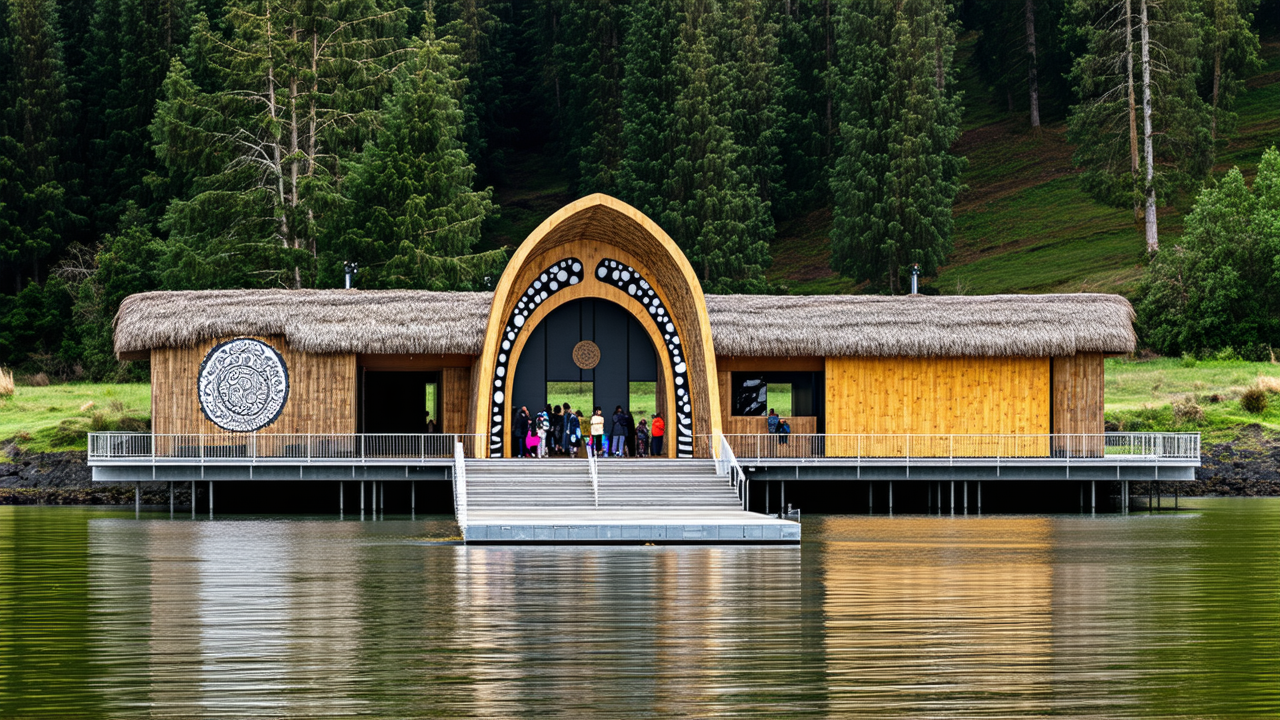Floating Marae: Rangatahi Innovate with Māori Knowledge at Science Fair
Young Māori Innovators Showcase Floating Marae at Science Fair
At New Zealand's only science fair dedicated to the fusion of Mātauranga Māori and modern science, rangatahi from across the country have presented groundbreaking solutions to today's most pressing environmental and social challenges. Among the most notable was a design for a marae that can rise above floodwaters, a concept developed by students from Te Rangihakahaka.
The Te Tūkohu Ngāwhā Mātauranga Māori Science and Design Fair took place in Rotorua from 23 to 25 July, organized by the Te Arawa Lakes Trust. This year marked a significant milestone as schools from all over New Zealand were invited to participate, highlighting the growing impact of the event. The fair, which has expanded rapidly in the past five years, aims to celebrate and integrate indigenous knowledge into scientific innovation.
The group from Te Rangihakahaka, Meremia, Miss-Mei, and Ezra, presented a model of a marae built on a platform called Ta Waka Noa, which is designed to float and rise above floodwaters. Their project considered practical aspects such as inflation, flotation, and the provision of essential resources like food and composting toilets during flooding periods. Ezra shared that the design is intended as a disaster-relief system, a place where the entire iwi can gather in safety, acting as a public marae in times of crisis.
Event coordinator Keeley Grantham praised the initiative, emphasizing that such projects are crucial in addressing real-world issues like rising sea levels and the vulnerability of marae located on floodplains. She noted that unlike most science fairs, which focus on Western science, this event is committed to embracing diverse knowledge systems, particularly through a Māori lens.
The fair also saw a range of other projects focused on environmental issues, including biosecurity, biodiversity, and climate change adaptation. One such project was led by Hikareia and Kaitlyn from Te Kura o te Whānau a Apanui, who conducted bird counts along the Motu River in Gisborne as a way to monitor the health of the local ecosystem. Their findings revealed the presence of terns, seagulls, and plovers, indicating a thriving environment.
Judges at the fair, including Te Rika Temara-Benfell from Te Puna Ariki Charitable Trust, expressed admiration for the ingenuity of the participants. Temara-Benfell highlighted that some of the projects were developed by children as young as nine and ten, who were researching complex issues like microplastics and their impact on the environment. He praised the integration of Mātauranga Māori with other scientific disciplines, calling it a promising approach to solving contemporary challenges.
As the science fair continues to grow, it stands as a testament to the power of indigenous knowledge in shaping sustainable and innovative solutions for the future. The event not only empowers rangatahi but also offers a platform for them to share their visions with the wider community, ensuring that their voices are heard and valued in the ongoing dialogue about environmental and social issues.
